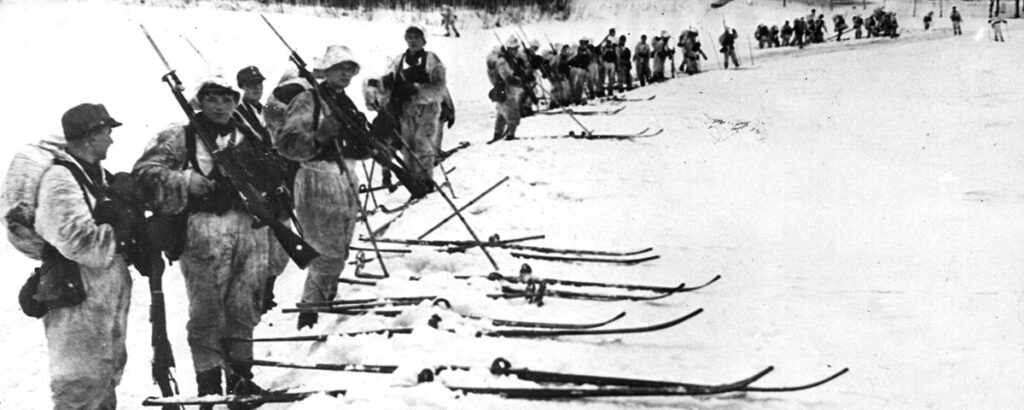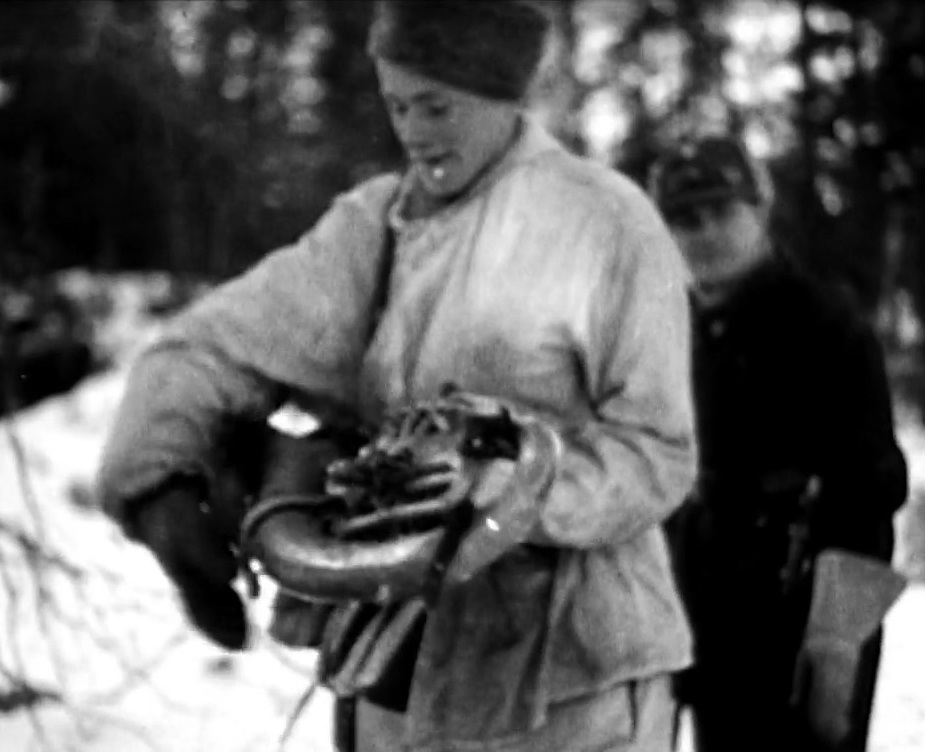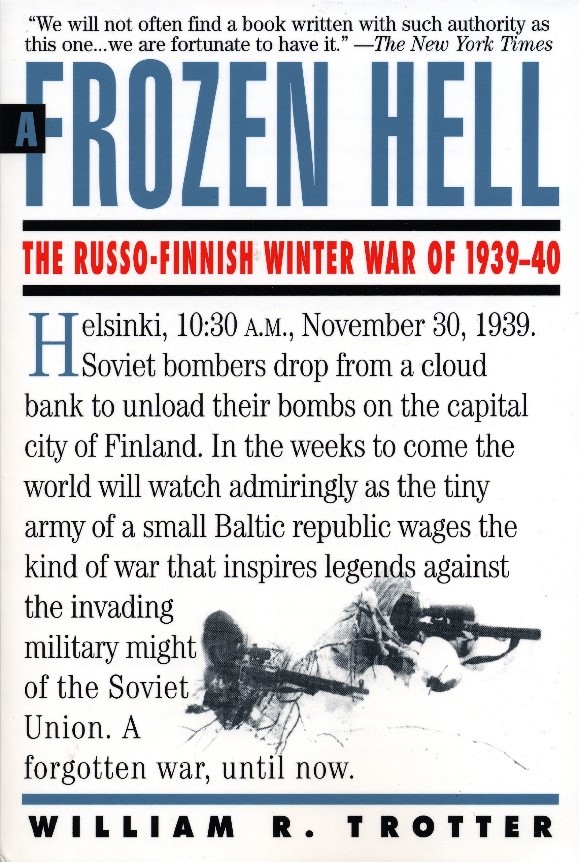Stalin and his Kremlin inner circle were egregiously overconfident in their planning for the Soviet Union’s invasion of Finland in 1939. Disaster would follow. That Soviet-Finnish Winter War today is a gift of lessons for Putin and his Kremlin inner circle in Russia, lessons ignored in a similarly overconfident war plan leading to similarly disastrous results for Moscow.
(Russian/Русский перевод) By Brian E. Frydenborg, June 5, 2022 (Twitter @bfry1981; LinkedIn, Facebook); this is one of a series of articles excerpted and/or adapted from Brian’s May 23 Small Wars Journal article, Bungling the Prewar and First Moves in Finland 1939 and Ukraine 2022: A Comedy of Errors for Stalin’s Soviet Union and Putin’s Russia, Respectively, his deep-dive analysis on the parallels between the 1939-1940 Soviet-Finnish Winter War.
Other articles excerpted and/or adapted from the May 23 Small Wars Journal article:
- May 23: A Terrifying Comparison Between Putin and Stalin
- May 25: A Brief History of Russian and Soviet Genocides, Mass Deportations, and Other Atrocities in Ukraine
- May 31: “Banderites”: What Russia Really Means When It Calls Ukraine Nazi and Fascist
- June 2: How Delusions of Phantom Fascists Duped Stalin in 1939 and Putin in 2022
- June 7: A Flurry of Telling Parallels Between the 1939-1940 Soviet-Finnish Winter War and Russia’s 2022 Ukraine War

SILVER SPRING—George Santayana famously wrote that “Those who cannot remember the past are condemned to repeat it.” Marx expanded on the thoughts of a fellow German when he wrote in an essay that “Hegel remarks somewhere that all great world-historic facts and personages appear, so to speak, twice. He forgot to add: the first time as tragedy, the second time as farce.” The ancients Aristotle and Polybius found history to be cyclical, as did Ibn Khaldun of the Middle Ages. The saying “the past does not repeat itself, but it rhymes” is attributed to Mark Twain. And Stephen Hawking gave us this zinger: “We spend a great deal of time studying history, which, let’s face it, is mostly the history of stupidity.”
Today, Russia is proving all of these, and rather pathetically. I have seen or heard some casual comparisons of Russian President Vladimir Putin’s current campaign in Ukraine to the Soviet-Afghan War or the recent U.S. wars in Iraq and Afghanistan, but such comparison are off when compared to a little known war within World War II that would be overwhelmed and dwarfed historically by the much larger conflicts of World War II, this sub-war being a relatively small sideshow.
I am writing of the so-called Winter War, or the First Soviet-Finnish War, which lasted from November 30, 1939, to March 13, 1940, especially apt to consider now as Finland seeks to join NATO in light of Russia’s recent imperialist aggression.
Just in the early pages of one of the definitive English accounts of this war—William Trotter’s A Frozen Hell: The Russo-Finnish Winter War of 1939-40 (Algonquin Books of Chapel Hill, 1991, 283 pages)—the mind-numbing parallels are shocking, and will be dissected throughout this series, this piece focusing on the parallel hubris (for sourcing, assume all uncited information comes from Trotter’s book but quotes will be given a page number or numbers in parentheses and anything from another source an external a link; in some instances, when I have written in detail about something, I may link to my own work, in which you can find many external sources backing up what has been stated. For a far brisker take on the big strokes of the entire war with a bit of comparison to Russia’s current Ukraine war and post-Soviet Russian-Chechen wars, see John Sipher’s smart summary in The Bulwark).
Soviet Hubris in 1939
At a final internal meeting just before the Soviet-Finnish War began late in November 1939, Soviet Premier Joseph Stalin and his innermost circle clearly felt that the coming fight against the Finns would be a cakewalk, that if there would be any resistance, it would be brief before they gave in to Soviet demands.
There was one particular faction in the Kremlin led by Andrei Zhdanov, the zealous political leader of Leningrad, that urged rapidity against Finland. As Trotter succinctly summarizes, Zhdanov’s Leningrad District crew
based its hasty and slipshod operational planning on two misconceptions: one being the belief that Finland did not have the capacity to offer more than token, face-saving resistance, and the other being the hoary Politburo [senior Kremlin decision-making council surrounding Stalin] delusion that the Finnish working class would rise up and paralyze its exiting government, if not actually turn its guns on them, just as soon as the Red Army came across the border. (18)
I was reading this passage well into the current Ukraine war and my jaw literally dropped: in terms of the planning, you could switch out “Finland” for “Ukraine” and “Finnish working class” for “Russian-speaking-as-a-first-language Ukrainians” and it was essentially the exact same situation!
Explains Trotter, the Finnish “populace was supposed to be so restive already that Soviet planners expected their efforts to be augmented by a large ‘fifth column’ deep inside the country. What happened was something very different” (36).
The subordinates for the main planners for the Soviet war against Finland—Zhdanov and his staff and the military commander he oversaw, Gen. Kirill Meretskov—did not think they needed resources beyond what was already built up in the Leningrad District and expected victory in mere days. Writes Trotter:
Some idea of the optimistic mood that prevailed, and of the power wielded by political officers [commissars] over their military counterparts, can be gleaned from an anecdote published in the memoirs of N. N. Voronov, a gentleman who, by World War II, had risen to the rank of chief marshal of artillery. Voronov was in charge of logistics for the guns, a task that would prove herculean, and it was in this capacity that he paid a visit to Meretskov’s headquarters during the waning days of November. Meretskov welcomed him, then kept his mouth shut; most of the talking was done by the artillery officer Kulik and a commissar named Mekhlis. These two asked Voronov what sort of ammunition stocks they could draw on during the coming campaign. “That depends,” replied Voronov: “Are you planning to attack or defend … and by the way, how much time is allotted for the operation?”
“Between ten and twelve days,” was the bland reply.
Voronov was not buying that estimate; all he had to do was look at a map of Finland. “I’ll be happy if everything can be resolved in two or three months.” This remark was greeted with “derisive gibes.” Then-Deputy Commissar Kulik then ordered Voronov to base all his ammo-consumption and fire-support estimates on the assumption that the entire Finnish operation would last twelve days, no more. (35)
Soviet plans as executed also had the Red Army invading Finland in the early days of the war from “eight different directions” (39) in “ten separate campaigns” (67) rather than concentrating on few attack corridors. There were even “sacks of goodwill gifts, presumably for all the disaffected Finnish workers [Soviet] troops would encounter in the woods… the Soviet political assessment was fantastic in its presumptions” (54). The Soviets were also so confident that they did not even feel the need to give their troops detailed briefings and included brass bands, presumably for parades for the what they presumed would be a welcoming Finnish populace:
many [Soviet soldiers] were so ignorant they didn’t even know the name of the country they were invading.
Whole divisions entered Finland with no worthwhile intelligence estimates of their opposition, guided by hopelessly inaccurate maps, yet fully burdened with truckloads of propaganda material including reams of posters and brass bands. (37)

As a stunning aside that is a testament to the carelessness at hand, this passage of Trotter’s bewilders:
After the war, Marshal Timoshenko, who masterminded the cracking of the [main Finnish defense] line, showed Nikita Khrushchev proof that Soviet intelligence had all along been in possession of detailed maps of the Mannerheim Line; but nobody had bothered to consult the intelligence service before starting the war. “If we had only deployed our forces against the Finns in the way even a child could have figured out from looking at a map, things would have turned out differently.” (66)
Russian Hubris in 2022
Today in Ukraine, similar hubris (and carelessness) is all over the Russian planning and execution of this war.
We know that many ill-used Russian troops were told they were only going to take part in “exercises” and were not even briefed that they would be invading Ukraine until just before they crossed the border; some were told that when they did, they would be greeted as liberators. Such careless treatment of their own soldiers has characterized the Russians’ approach to this war, as I have in detail noted before.
Russia’s plan actually had Kyiv falling within a few days and the rest of the country not that long after, a wildly overoptimistic plan that has utterly failed. Part of this failure involved Russia trying to advance along many fronts at the same time (as the Soviets did in Finland), spreading out their forces relatively thinly and leading to every Russian front either stalling or collapsing (the Kharkiv front being the latest example of the latter). Some among the early waves of troops were even, apparently, made to bring their formal dress uniforms with them for a victory parade in Kyiv that would have occurred after the anticipated Russian capture of the capital city that did not materialize.
And, as I noted in another article and the parent piece from which both were excerpted, Putin was wildly overconfident about Ukraine’s ethnic Russian population buying his propaganda about their supposed oppression at the hands of Ukraine’s supposedly “Nazi,” “Fascist,” and “Banderite” leadership (see my related explanation, also excerpted from the same parent piece, of the history involved and the term Banderite). Instead, he succeeded in largely uniting Ukraine behind its President Volodymyr Zelensky and against Russia, when before for years there had been major pro-Russian sentiment amongst a significant segment of the population. Putin’s miscalculation has pretty much destroyed that sentiment.
Finally, in a broader sense, as I have noted across several pieces before, Putin’s hubris here also extended to the degree he thought that the West and NATO were weak and divided and would simply accept such a challenge from him to its partnership with Ukraine and European security in general. Instead, the West and NATO have rarely been as united, and Finland—which stayed out of NATO for the entire Cold War and the decades since—and Sweden—which has been neutral for over two centuries, since the late Napoleonic Wars—are both banging on NATO’s door for formal membership in it, demonstrating further grossly hubristic miscalculation on the part of Putin and his people.
History (Inexcusably) Repeating Itself
Historically, I mentioned earlier that this war was a sideshow within World War II. But it was no sideshow to the Finns or immense numbers of Soviet troops who perished. And it should not have been a sideshow to Putin or his planners in the run-up to, and now during, this ill-fated, disastrous waste of a war in Ukraine. Had even the most basic lessons of the Winter War—ones obvious to even anyone with even a rudimentary understanding of tactics and strategy (“even a child,” to requote Khrushchev)—been taken in into account by today’s Kremlin planners, Russia’s current war effort would be far more successful today and Ukraine far, far worse off for that. Lucky for Ukraine, the free world, and anyone with a respectable conscience, that is not the case.
See all Brian’s Ukraine coverage here
© 2022 Brian E. Frydenborg all rights reserved, permission required for republication, attributed quotations welcome
Also see my eBook, A Song of Gas and Politics: How Ukraine Is at the Center of Trump-Russia, or, Ukrainegate: A “New” Phase in the Trump-Russia Saga Made from Recycled Materials, available for Amazon Kindle and Barnes & Noble Nook (preview here), and be sure to check out Brian’s new podcast!

If you appreciate Brian’s unique content, you can support him and his work by donating here
Feel free to share and repost this article on LinkedIn, Facebook, and Twitter. If you think your site or another would be a good place for this or would like to have Brian generate content for you, your site, or your organization, please do not hesitate to reach out to him!
